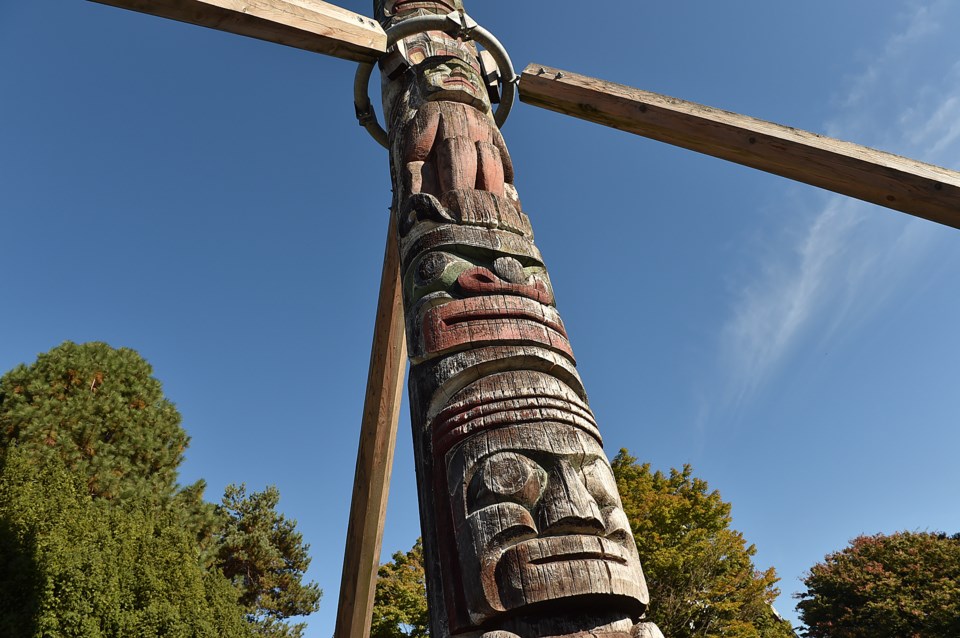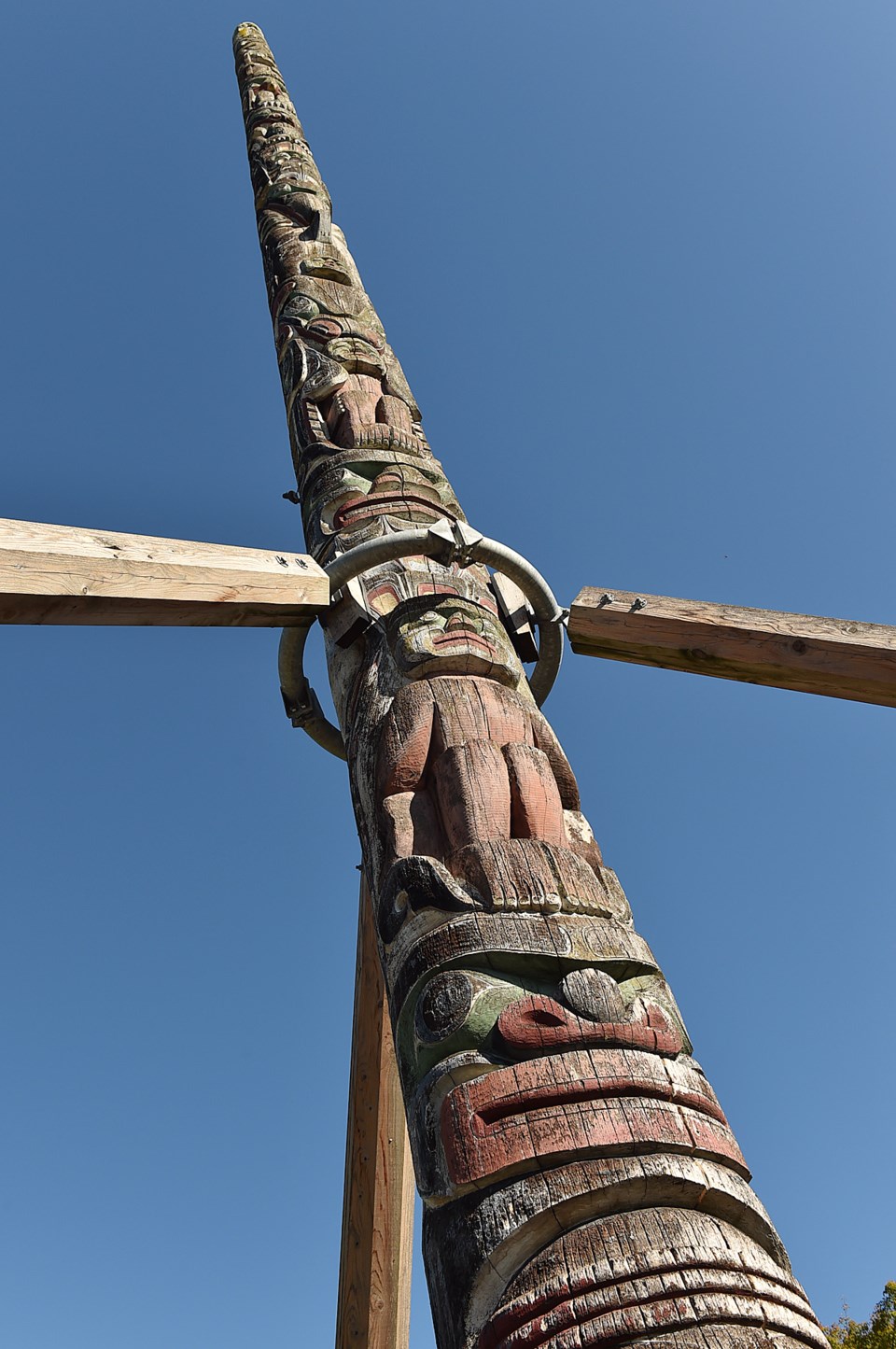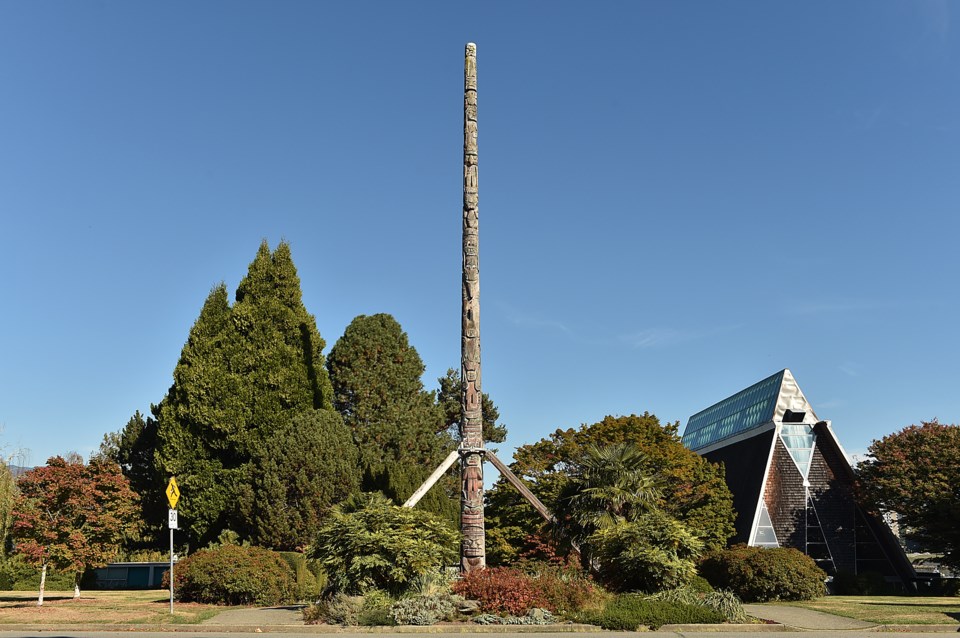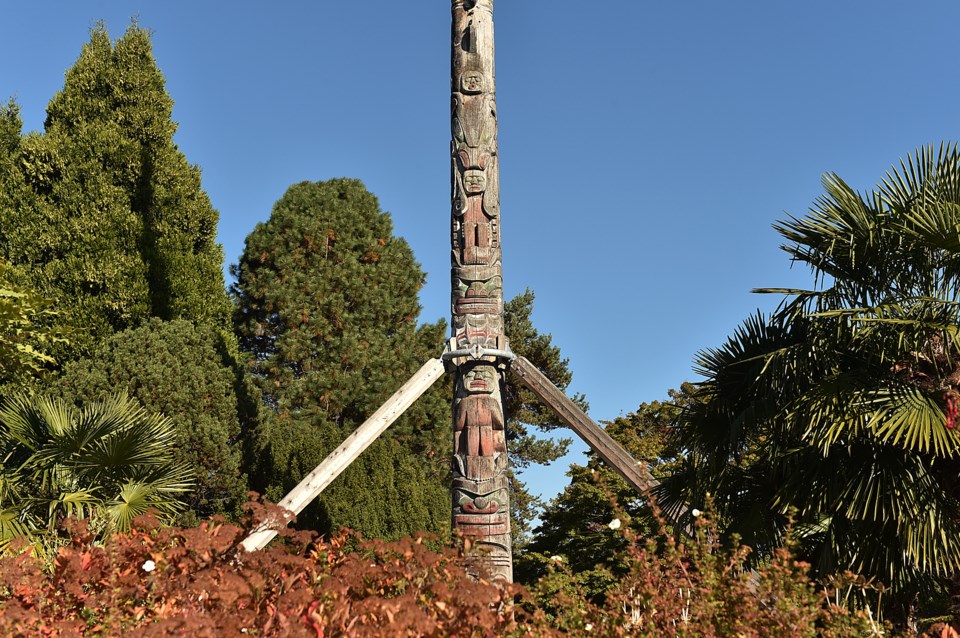The Courier spoke to Eric Fredericksen, head of public art for the City of Vancouver, as work begins to assess and remove the Centennial Totem Pole for restoration.
The pole, which is located in front of the Maritime Museum in Hadden Park, was carved by Mungo Martin in 1958.
It is one of two identical poles commissioned by the provincial government to commemorate B.C.’s colonial history to that date. Its sister pole was presented to Queen Elizabeth and stands in Windsor Great Park in Berkshire, England.
How tall is the totem pole?
It’s about 100 feet tall but we’ve had to remove the hat that was on it that we’ll restore. It’s meant to be 100 feet. Right now, it’s about 93.
How much does it weigh?
I don’t think we know yet. It will actually get lighter after we take it down because it's water logged now. Part of the point of the work we’re doing is to dry it out.
What’s holding it up right now? I know there was a bracing system installed a few years ago.
There have been a couple of steps [taken] since the wood has degraded. The support system has been in place since 2014 — this sort of ring around it and then angled supports going up to the ring to buttress it.

What is the process for testing the integrity of the wood?
This week, we’re going to core into the concrete foundation that it sits in and then use a device called resistograph to test the moisture content of the wood below ground. That will allow us to gauge the strength of the wood and allow us to plan for the right way to remove the pole safely.
How do you take down a totem pole?
Once we know the strength of the pole, we’ll know how much of the concrete we can core out and also whether we need to remove all the concrete from the pole to reduce weight on it. We’ll work with engineers and a fabricator to make something called a strongback, which is a steel support that will be attached to the pole. That will support the pole and allow us to remove it without stressing the wood itself. The crane will attach to the strongback and will pull it up that way.
How many people will it take to carry this out?
It’s two cranes, so it’s a big job but we don’t know the staffing yet.

Will any roads need to be shut down?
The work will be done in the dead of night, at midnight or later, and there will be a road crew when it’s time to actually remove it from the site.
How dangerous is it?
As far as life and limb, we’re going to do it very carefully. The pole itself is a huge concern just because it’s been sitting out in the weather for almost 60 years. It has taken a lot of moisture and we’re not sure of its stability. The main thing is just taking every step to ensure that its integrity is maintained as we remove it.
Is there anything ceremonial that needs to take place?
We’re speaking with the Musqueam, Squamish and Tsleil-Waututh and we’re also working with the family of the carver, Mungo Martin, who is Kwakwaka’wakw. They’re heavily involved in the whole process but especially in thinking through the conservation and restoration of the work. But in terms of anything ceremonial, we’re not sure yet. We’re still on the time frame that it will be more than a month or month-and-a-half before we’re ready to remove the pole.
What size/sort of truck is required to transport the pole once it comes down?
A big tractor-trailer sort of rig, flatbed sort of thing. I imagine a lumber-type truck.

What will happen once the pole is down?
Once the pole comes down, we’re going to take it to a warehouse where it will be set up in a cradle so it can basically sit in a dry environment. We need to give it a lot of time to dry out before we can assess it. Mainly, it will do very little for as much as a year as it dries out. You want to be careful with the speed of that sort of thing because the way that wood can react when it changes its humidity level. We don’t want to cause more cracking or shrinkage, or things like that. So it will very gradually dry out and then at that point [we'll work] with conservators, including carvers who are direct descendants of Mungo Martin, the original artist. We’re working, in particular, with David Knox, who is his great-grandson.
Is the plan just to fix problem areas, or are you working to preserving the pole as a whole?
We know that we will work with carvers to remake parts of the pole, particularly the hat, which protects the top of it and is also a significant part of the design of the pole, which was removed because it was badly degraded. The rest of it, we’ll learn that as we go. We need to assess the pole before decisions can be made about how much to restore. There is no desire to make it look completely new. We want to work to preserve the integrity of the original work.



